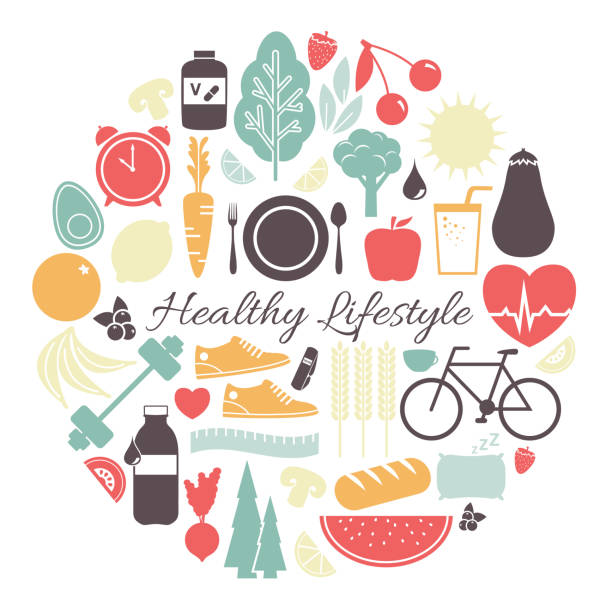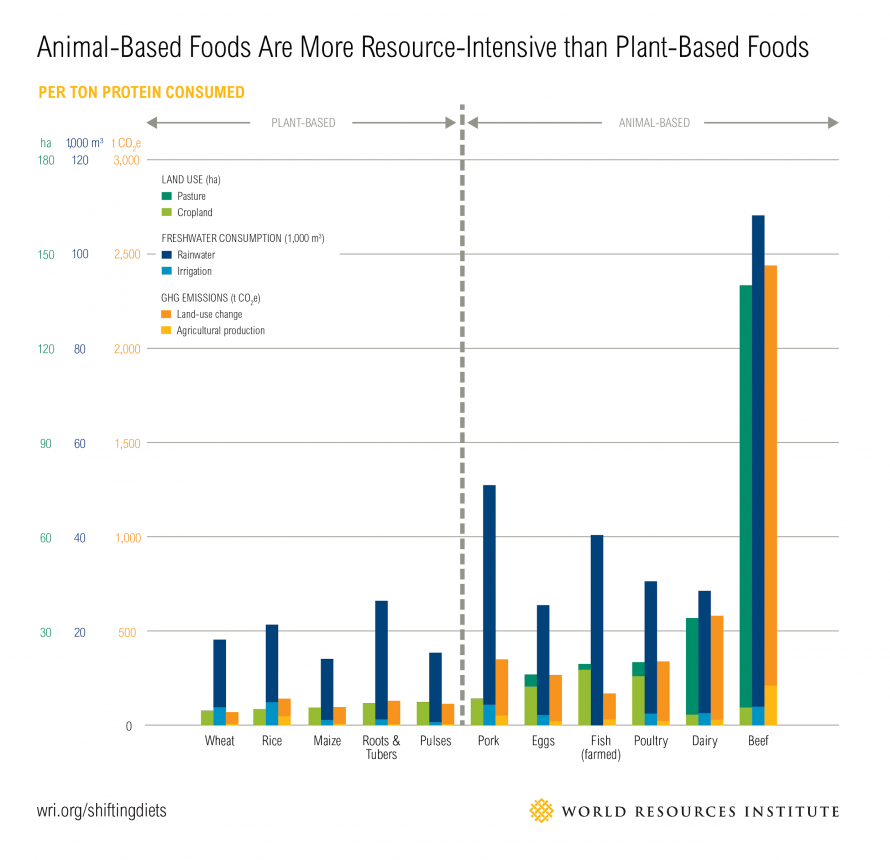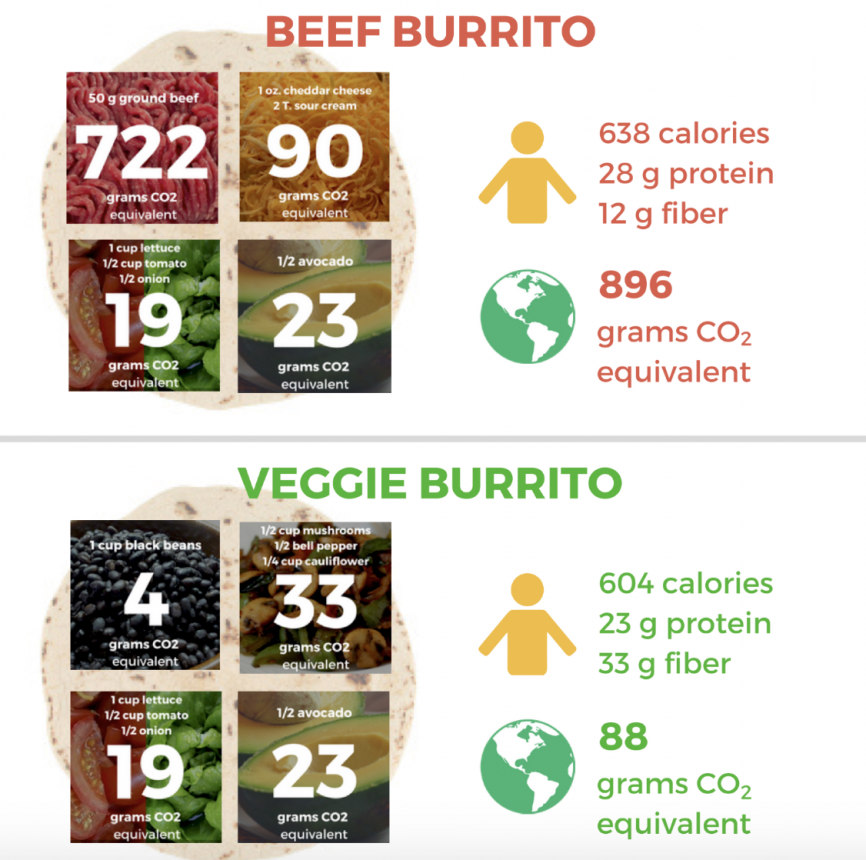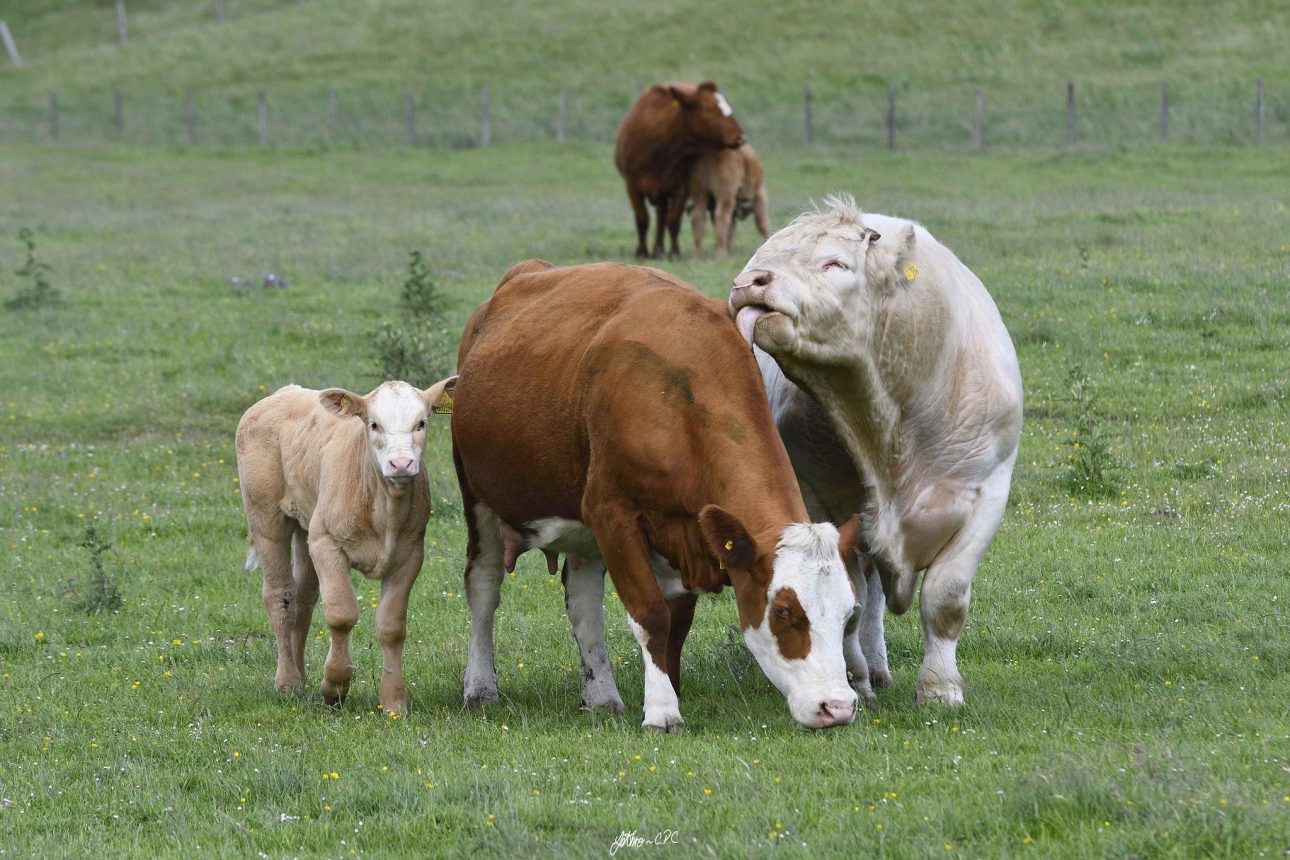Faculty and Staff
Click here to add your own text
In a perfect world, we would eat in harmony with our hunger signals, fully enjoy our meals, and choose more nutritious foods when possible. But this is often much more difficult than it sounds. Under societal pressure to look a certain way, 91% of college-aged women report having tried dieting at some point, and 61% of females and 28% of males report experiencing disordered eating. “Eating healthy” is not just about the food you eat, but is also about the relationship you have with food.
So what does a healthy relationship with food look like? According to the National Eating Disorders Association, “[a healthy] relationship includes relaxed eating, choosing preferences over positions, and practicing balance and flexibility in your eating.”
In this context, “relaxed eating” means eating in accordance with your hunger signals and understanding that these signals may change with your routine, moods, and physical demands. It also means that eating differently from one day to another should be no cause for alarm, judgement, or punishment.
“Preferences” refers to foods you prefer to eat, while “positions” refers to rigid habits and a fear of choosing other options. Thus, “choosing preferences over positions” means understanding that your preferences might not be suitable for every situation, and being content to choose from the other existing options.
“Balance” means “everything in moderation,” including all food groups. Unless you are avoiding certain foods for religious or ethical reasons, or have been instructed to do so by a doctor, there is no need to avoid eating any particular food. “Balance” also means eating for both pleasure and hunger, and avoiding diets (spoiler alert: diets don’t work anyway).
“Flexibility” is defined as “the absence of strict rules surrounding eating and food habits.” This includes removing the labels of “good/clean food” and “bad/junk food.” Some foods are more nutritious than others, but a healthy diet –and importantly, a healthy relationship with food– usually includes all types of foods.
In other words, a healthy relationship with food means the absence of obsession, restriction, anxiety, and guilt. In the second episode of the LiveWell podcast, Dr. Janet Tomiyama (PhD at UCLA in 2009) discusses her research on dieting and weight stigma, and the surprising factors that can drive us to eat, or not eat.
In this article, we will use Dr. Tomiyama’s definition of dieting: “cutting calories in order to lose weight.” This is often executed through commercial diet systems such as Weight Watchers, diets that remove specific macronutrients such as the keto diet and the Atkin’s diet, fad diets such as juice fasting, or simply counting calories and aiming below a certain daily threshold.
According to the Boston Medical Center, approximately 45 million Americans go on a diet each year, but there is little to no statistical evidence that diets result in long-term weight loss. Summed up in one sentence, Tomiyama describes her research as follows: “the main theme that goes through my research is that [a] punitive perspective on weight, size, stress eating and hanging out with friends is not productive.”
In fact, Tomiyama’s PhD research found that dieting releases stress hormones (cortisol), which may actually cause further weight gain. Even if short term weight loss occurs, the majority of studies she reviewed found that dieting is overall not a successful weight loss strategy.
This is logical, considering that deprivation of any sort can cause stress, even when the deprivation is self-inflicted. If you are considering a change in the way you eat, Tomiyama recommends focusing on adding more nutritious, healthful foods, rather than reducing “bad foods.” She also hopes that society’s view of health will shift to a focus on eating well, moving, less stress, sleeping well, and having good friendships without mentioning weight whatsoever.
In general, mentioning weight is not just rude, but may result in poorer health outcomes. Another paper by Dr. Tomiyama reveals that experiencing weight stigma is stressful, and as mentioned earlier, stress can cause further weight gain. Additionally, Tomiyama reports that people with a higher BMI may avoid the doctor more frequently due to fear of being shamed for their weight, which may result in health issues unrelated to their size. Again, it is best to avoid using weight as a metric for how healthy a person is.

Eating is not an exact science, and while counting calories in itself does not release cortisol, Tomiyama found that the practice increases perceived stress regardless. Tracking calories and macros (short for macronutrients: carbohydrates, fat, and protein) is popular among bodybuilders and athletes, but may not be necessary for the average person and may actually be detrimental for those that have a history of disordered eating. This article might help if you are deciding whether tracking macros would be beneficial to you.
The alternative to tracking your daily intake is intuitive eating. Intuitive eating means listening to your body, noticing how some foods might make you feel differently than other foods do, and eating when you are hungry, until you are full. It means rejecting diet culture, making eating enjoyable and non-stressful, and respecting yourself and your specific needs.
A search for a healthy eating practice that does not involve calories whatsoever brings us to the 80/20 approach. The 80/20 approach to eating suggests that approximately 80% of your foods should be minimally processed, plant-focused foods, and 20% is anything you would like to eat, perhaps the foods that you consider comfort foods. Although you’re eating 20% of less nutritious foods, there is no need to feel any remorse or guilt — comfort foods may actually increase your health in an unexpected way!
During an interview with Kaitlin Reid, MPH, RDN, for a previous blog post, I was curious about her experience with common misconceptions about food. Her response was surprising: “The main misconception that people have about food is that there are ‘good foods’ and ‘bad foods’.” She explained that labeling foods in such a way causes unnecessary stress when we eat ‘bad foods’, when in reality we should be able to enjoy these foods and move on.
What’s more, eating “comfort foods” without any guilt attached may be beneficial in reducing stress. Another major finding in Dr. Tomiyama’s research is that highly stressed individuals tend to engage in comfort eating, and that doing so results in lower cortisol levels. In the LiveWell podcast, she reveals that she is also currently looking into the possibility of transforming fruits and vegetables into “comfort foods” using Pavlovian conditioning.
While Tomiyama recognizes the ability of comfort eating to reduce stress, she also encourages using social rewards in place of food rewards when possible, and using a variety of other strategies to reduce stress. She also reminds podcast listeners, “people who don’t sleep well also find it really difficult to eat well. Sleep deprivation interferes with the parts of your brain that help you make healthy choices.”
Reducing stress and sleeping more can improve not only your relationship with food, but also with yourself and with others. These relationships all contribute to overall health — a healthy relationship with food is just one piece in the multi-faceted puzzle of health and wellness. This relationship looks different for everyone, and it’s always important to be compassionate and open-minded, both with yourself and others. Here’s to listening to our bodies, being kind to ourselves, and making eating enjoyable!
If you think you or someone you love might be suffering from an eating disorder, please contact UCLA Counseling and Psychological Services (CAPS) at (310) 825-0768, or the National Eating Disorders Association (NEDA) Helpline at (800) 931-2237.
Patience Olsen is an undergraduate student at UCLA majoring in Civil and Environmental Engineering. In addition to blogging for the EatWell pod, she is a PD for the ASCE Environmental Design project, the Events Coordinator/Publicity Director for AWWA, and a member of the Club Sports Climbing Team.
Eating healthy and exercising are good for your overall health and well-being, right?! Well, yeah! However, starting and maintaining a healthful lifestyle may, at times, seem daunting. Trying to eat a balanced diet, exercise 30 minutes 5 times a week, sleep a minimum of eight hours a day, and stay hydrated all while working, going to school, and spending time with family and friends; honestly, just writing that made me feel overwhelmed.
But do not fret. Though starting and maintaining healthful habits can be intimidating, there may be a solution within reach. What is it? Consider making small healthy changes that complement your lifestyle and preferences.
Studies show incorporating a small healthful change into your current lifestyle, as known as the “small changes approach,” can lead to improved health and healthy choices over time. Specifically, the “small change approach” suggests reducing your consumption of food or increasing your output of energy (exercising) by 100 calories. Although the approach recommends reducing a specific number of calories, promoters of “small changes” encourage food and beverage swaps that lead to a balanced diet, as opposed to counting calories.
Intrigued? Perfect! Now here is the fun part. How can you, a student, a parent, and/or a busy professional, make a change? Consider a slight alteration in your physical activity and/or food choices. Below is a list of suggestions outlining ways you can adopt ONE small change:
Replacing one sugary sweetened beverage (SSB), like soda or juice, for water, can decrease your calorie intake by as much as 200 kcal. If you miss the flavor of soda or juice, infuse your water with fruits and vegetables. Cucumber, Mint, and Lemon water is a refreshing take on SSB’s. Soaking pineapple and strawberries in water can give you the sweet kick you may crave. For more flavored water recipes, click here.

Similar to the study above, consider swapping an unhealthy snack for a healthful one. To create a healthy snack, combine foods high in nutrients like fiber, protein, and vitamins. Think apples and peanut butter, hummus and whole wheat pita, unbuttered air popped popcorn and trail mix, the possibilities are endless! Visit the American Heart Association for additional easy snacking ideas.

During the day, when are you walking? Maybe to your car, possibly around your job, or to class? Wherever you have opportunities to walk, consider extending the time and/or distance. If you are parking at a store, park further away from the front door. Take the stairs at your job. If you have time, take the long way to class. Karan Ishii wrote a fantastic article full of tips on how to make the most of your walking opportunities. Check it out!
Challenge yourself! Try ONE! If you would like to share, post on your social media with #uclalivewell.
Erica Lee MPH, RD, is the UCLA Upstream Obesity Solutions Grant Coordinator. In her capacity as a coordinator, she teaches UCLA health professional trainees the importance of healthful nutrition practices. In her free time, you can find Erica running, cooking a new recipe, and gardening.
If you’ve lived or worked on the Hill, you’ve likely had a chance to experience the exceptional quality and variety that UCLA’s dining halls have to offer. You may have also heard that UCLA has the best dining halls in the nation; this statistic comes from two notable rankings, Niche’s “2018 Best College Food in America”, where UCLA’s dining halls have topped the ranking for two out of the past three years, and Best Value Schools’ “50 Best Colleges with the Best Food”.
The “Best College Food in America” ranking focuses mainly on student surveys and usually represents the quality and flavor of the food offered. To include other key factors, such as sustainability and inclusiveness to all dietary needs, Best Value Schools compiled information from Niche, The Princeton Review, College Rank, the Daily Meal, and Best Colleges. According to these compiled statistics, UCLA came in 3rd place overall for 2017-2018!
Efforts over the past decade that have contributed to this ranking include the De Neve Flex Bar (2017), the inception of Bruin Plate (2013), and the thoroughly successful tray-free initiative (2009). These efforts, among others, support sustainability, nutrition, and students of all dietary needs and choices. But more ambitious goals lie ahead. UCLA Housing & Hospitality Services aim to reduce menu items with animal proteins by 10% by Spring 2020, while adding exciting plant-based dishes.
This fall, Rendezvous West added delicious (and shockingly realistic!) ImpossibleTM ground beef as a protein option in Build-Your-Own Burritos and Burrito Bowls, and in the California ImpossibleTM Burrito.
FEAST at Rieber is increasing their plant-centric options through dishes flavored with Indian spices such as “Spice Dusted Cauliflower, Yams, Charred Corn, Spinach, Spiced Pumpkin Seeds, and Avocado Mint Sauce”, and “Rajasthani Yellow Lentils, Nigella Seeds, and Micro Cilantro”. Adding these dishes and many others is a part of a continual effort to provide more authentic Asian foods at FEAST.
Bruin Bowl, a new dining location inspired by CAVA, Sweetgreen, and Tender Greens, is scheduled to open by Winter 2020. Located inside De Neve Commons, it will not only be easily accessible to students in the dorms, but also to students that walk to and from the apartments via De Neve Plaza. And yes, methods of payment other than BruinCard swipes will be accepted!

A delicious plant-based bowl from CAVA with falafel, hummus, and spicy lime tahini/green harissa (dairy free). Instagram: @cava
The link between sustainability and nutrition is complex, but one food sticks out like a sore thumb: beef.
In general, animal products have a much higher environmental impact than plant products. According to a study by Chatham House: The Royal Institute of International Affairs, greenhouse gas emissions from the livestock sector represent 14.5% of all greenhouse gas emissions and even exceed emissions from the transport sector. In this study, the ‘livestock sector’ is defined as the feed production, livestock production, slaughter, processing, and retail associated with all land-based-animals raised as food sources (including dairy and eggs).
Similarly, a report published by the United Nations Food and Agriculture Organization even sets the number as high as 18%. But beef is the most resource-intensive of all animal products by far. The three diagrams below help to visualize the environmental impact of beef compared to other proteins.

A comprehensive overview of the resources required to produce various proteins by the World Resources Institute.

The link between sustainability and nutrition is shown in this graphic by The Culinary Institute of America.
In a previous blog post, Jennifer Jay, Professor of Civil and Environmental Engineering, collaborated with the EatWell pod to create the infographic shown below. While beef and veggie burritos are comparable nutritionally, the carbon footprint of the beef burrito is 10x greater.


In the same article, Professor Jay writes,
“In addition to driving less and using less electricity, the FASTEST, EASIEST, AND BEST way to reduce our carbon footprint is to eat a plant-based diet. We do NOT need meat in our diet, and in fact, there is evidence to suggest that meat-heavy diets increase the risk of and exacerbate already-present chronic diseases, and are pro-inflammatory.”
You can find the whole infographic and more information from Professor Jay in the EatWell blog post here.
If asked, most people would say they are opposed to animal cruelty. But 94% of us contribute to the suffering of billions of animals, perhaps unknowingly, by eating animal products. This article clearly outlines the processes of transport, immobilization, and slaughter, and explains which parts of the process cause the animal to experience stress, fear, or pain.
And it’s not only the animals that suffer; slaughterhouse workers are increasingly being treated for PTSD and severe anxiety, and the psychologically taxing work is associated with increased domestic violence, social withdrawal, drug and alcohol abuse, and higher crime rates.
As one former slaughterhouse worker attests in the book Slaughterhouse: The Shocking Story of Greed, Neglect, and Inhumane Treatment Inside the U.S. Meat Industry:
“The worst thing, worse than the physical danger, is the emotional toll. If you work in the stick pit [where hogs are killed] for any period of time—that let’s [sic] you kill things but doesn’t let you care. You may look a hog in the eye that’s walking around in the blood pit with you and think, ‘God, that really isn’t a bad looking animal.’ You may want to pet it. Pigs down on the kill floor have come up to nuzzle me like a puppy. Two minutes later I had to kill them. … I can’t care.”
99% of farm animals in the US are raised on factory farms and numerous undercover investigations have revealed inhumane practices within the factory farming industry. More than 50 billion land animals are slaughtered yearly, and many more die on their way to the slaughterhouse due to heat stroke and diseases that run rampant in the impossibly close quarters that the animals occupy. In fact, 70-80% of all antibiotics are used for livestock for this very reason, which contributes to world antibiotic resistance.
Eating more plant-based foods and fewer animal products means changing lives: not only the lives of animals, but also the lives of the employees hired to kill them. Since supply follows demand, personal actions can genuinely make an impact when it comes to vouching for animal rights.

Some of the few very lucky cows that spend their lives outside, rather than in concentrated animal feeding operations (CAFO). Image from flickr.com
To learn more about the nutritional benefits of eating more plant-based foods, I spoke with Erica Lee, MPH RD, who summed it up as follows:
“By eating more plant-based foods, you are more likely to consume the nutrients typically lacking in the American diet, especially fiber. Additionally, your risk for chronic diseases, such as heart disease, tends to decrease. But keep in mind, plant-based does not automatically mean healthy.”
For example, chips and soda are technically completely plant-based, but definitely not the best when it comes to health.
But what about eating a fully plant-based diet (ie. no animal products at all)? The position of the Academy of Nutrition and Dietetics is that “appropriately planned vegetarian, including vegan, diets are healthful, nutritionally adequate, and may provide health benefits for the prevention and treatment of certain diseases. These diets are appropriate for all stages of the life cycle, including pregnancy, lactation, infancy, childhood, adolescence, older adulthood, and for athletes.”
Common worries about eating fully plant-based include not being able to get enough protein, iron, or calcium, difficulty reaching satiety, and high cost.
To ease these worries, Lee suggests identifying foods that contain high levels of protein (keep in mind that vegan bodybuilders get enough protein to build their impressive physiques without any animal products involved), iron, vitamin B12, and calcium, then choosing less processed foods such as beans and rice that happen to be much cheaper than animal products, focusing on flavor, and trying new recipes with these low-cost ingredients.
For those looking to transition to a fully plant-based diet, Lee recommends first checking out MyPlate or the Harvard Healthy Eating Plate (pictured below) and ensuring that your meals look similar. Next, focus on adding plant-based proteins and making replacements where possible, rather than only removing the foods that you no longer want to include. She also encourages looking for recipes of plant-based versions of the foods you already enjoy, eating as colorfully as possible, being kind to yourself throughout the process, and having fun with it! After all, your diet is constantly evolving and belongs to no one but yourself.

With some background on the benefits of choosing plant-based foods, it’s no surprise that UCLA strives to provide a variety of delicious plant-based options to keep our campus eating well. Dining on the Hill is constantly evolving, and your comments and suggestions are always welcome!
Patience Olsen is an undergraduate student at UCLA majoring in Civil and Environmental Engineering. In addition to blogging for the EatWell pod, she is a PD for the ASCE Environmental Design project, the Events Coordinator/Publicity Director for AWWA, and a member of the Club Sports Climbing Team.